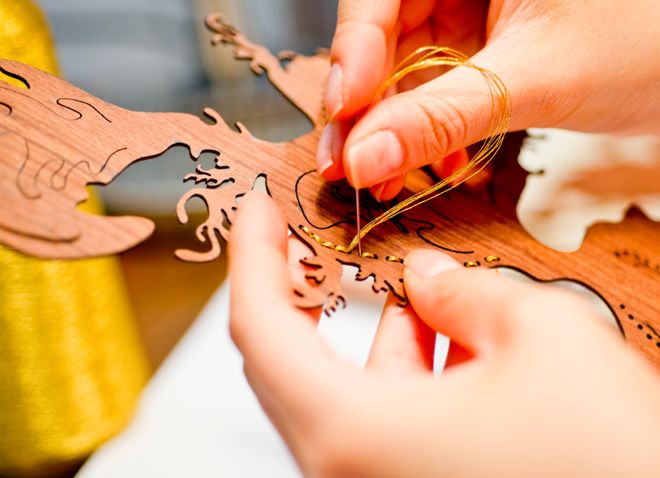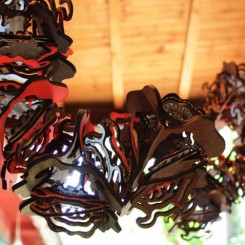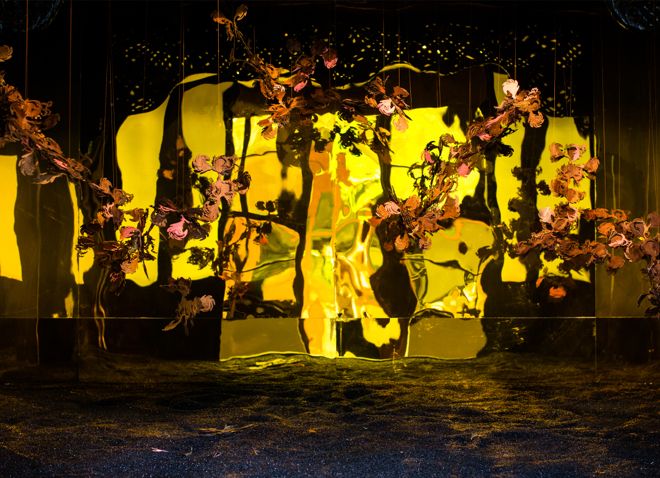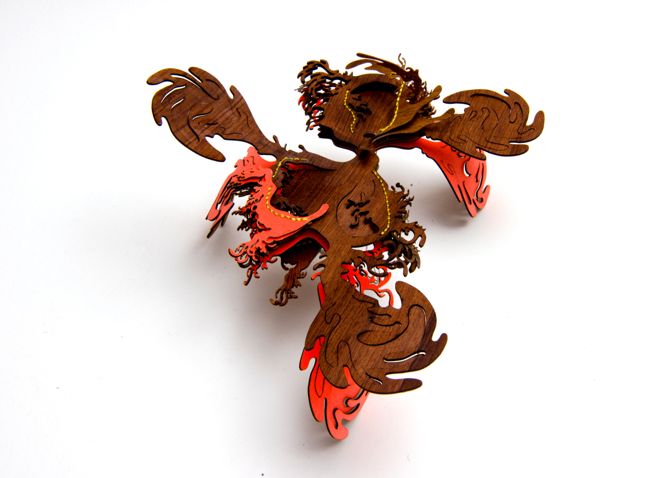Elaine Ng Yan Ling explores her love of textiles, electronics, biomimicry, interiors and installations through The Fabrick Lab, the experimental design company which she set up in Beijing. Elaine Ng is British Chinese and a graduate of Central Saint Martins in London where she earned her MA Design in Textile Futures.
Stephany Zoo: So, where did this all start from?
Elaine Ng: Studying as a textile weaver at CSM during my BA, I was already very interested in bio-mimicry design, how humans studied animal skeleton structures and were inspired to create aerodynamic design. Professionally I have been applying my knowledge as a color and material designer for both the automotive and mobile phone industry at Nissan Design Europe and Nokia Design Beijing respectively. It is important to design with a good understanding of materials, so that they can express themselves as a function and not just merely a decoration.
SZ: When working with textiles, the most immediate thing to turn to would probably be clothing. However, you have chosen installations. Why?
EN:Textile is a very broad terminology. I see myself more of a material designer rather than just a textile designer. I am interested in designing materials for versatile shelter. Garments are also a form of shelter and protection—only on a smaller scale—hence material should not only be bound to such a limited application. It would be more sustainable if materials also had a versatile application. I chose to focus on installations because it provided room for imagination, especially when I developed new textile materials from an architectural perspective.

Elaine Ng Yan Ling , piece from the “Climatology” installation at Wu Hao curated shop in Beijing, 2013.
SZ: We were particularly enchanted by your “Climatology” exhibition you created for Wu Hao. The extensive installment features materials that respond to the temperature and the humidity of the environment, distorting each of the flower like works. Can you tell us more about the narrative behind this project?
EN: For instance “Climatology” is a limited collection that I have been invited to design for Wuhao, I wanted to concentrate on the elements of sharing in my work. In particular, to invite visitors to turn their attention to invisible elements of the houses we live in. Therefore, I decided to create a life-sized installation where people could read the change of invisible energy around us by reading the change of shapes of the installation.
Here’s a video of the project as well: http://vimeo.com/69517240
SZ: Can you discuss a bit more the practical implications of your research and design?
EN: The initial research aimed to explore the function and symbiotic relationship between shape memory alloy/polymers and the natural sensing system of wood. I also investigated the intrinsic qualities of natural and artificial materials using the hybrid tectonic system (referring to a system that creates movement with a mixed use of material) to challenge preconceived limitations and increase the potential of textiles. Ultimately, this investigation focuses on the potential of Nature’s sensing system so as to consider how the current construction system can be improved to suit a more efficient way of living.
SZ: Where did this design philosophy of bio-mimicry come from? It sounds like there’s a fantastic story in there!
EN: Bio-mimicry is something that has always fascinated me since I was young. For example, when I found out Velcro was inspired by burrs, I was intrigued and from then on I began my own research with science and subsequently linked it with art. For the last 3.8 billion years, living organisms have had their own responsive systems to survive changes in conditions. Like pine cones, they have their own natural sensory systems that developed over 1.2 billion years ago while humans have only invented shape memory alloys (alloys that “remember” their original, cold-forged shapes) about 30 years ago. From a technological point of view, humans are lagging behind nature. Hence biomicry makes me realize that everything I am learning comes from nature.
You can find out more about Elaine and her work by visiting her company website here.


